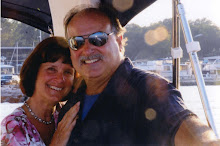Bell’s lifelong commitment to helping the deaf began with his father, Alexander Melville Bell, whose greatest achievement was a new phonetic alphabet which he called “Visible Speech.” When Alexander Graham Bell tried using his father’s invention to teach the deaf to speak, he was an instant success.
Visible Speech was based on Melville Bell’s knowledge of the human organs of speech. He studied the vocal organs when making sounds and assigned to each sound a symbol that represented the corresponding position of the vocal organs, creating the phonetic alphabet.

Below is a photo of Bell with Helen Keller and her teacher, Annie Sullivan. Bell first met Helen Keller when she was a little girl. She later gave Bell credit for her ability to write and speak.
Fascinated by his father’s work, young Alec Bell explored the mechanics of speech. He and his brothers constructed a “voice automation,” a crude replica of the human speech organs. They also taught a dog to speak. By the application of suitable doses of food material, the dog was taught to sit up on his hind legs and growl continuously while Alec manipulated his mouth, and stop growling when he took his hands away. The dog’s repertoire consisted of the vowels “ah” and “oo,” the dipthong “ow,” and the syllables “ma” and “ga.” They then manufactured words and sentences composed of those elements, and the dog’s final linguistic accomplishment consisted in “ow-ah-oo-gamama,” which they passed off as “How are you, grandma?” The fame of the dog spread among their father’s friends and people came from far and near to witness the performance.
In 1875, Bell’s gifted assistant Thomas Watson, accidentally plucked a transmitter reed on Bell’s apparatus. Bell, in another room, heard a sound. Watson had unexpectedly generated an electric current strong enough to activate Bell’s receiver. Bell quickly modified his apparatus which worked. Watson could hear the muffled sound of Bell’s voice. VOILA The telephone was born.
Alexander taught at a school for the deaf and ultimately married one of his students. They had 2 daughters and 10 grandchildren. Their Nova Scotia home can be seen from the museum.
Once a year on their wedding anniversary, the middle of July, their family (there are approximately 100 members now) comes together to their to home to raise a toast in their honor.
As we were leaving the museum, a beautiful sailboat sailed past the lighthouse. I couldn’t resist grabbing a picture.
Our last day of touring with the group before our departure, was Cabot Trail by bus. We visited the Village of Cheticamp and Celtic Lodge and Cape Breton Highlands National Park.



First stop was the scare crow patch. What an imagination the creator has! Unfortunately we did not get to meet her as her husband was ill and she closed the shop for the season and is searching for a buyer.



Stopping at Saint Pierre’s church,

our guide gave us a great tour and one of our guests demonstrated the acoustics by YODELING for us.
We made an unscheduled stop at an art museum with the most unusual hook rug pieces.
Marguerite Gallant, 1890-1983, was a native of Chéticamp with a profound love of collecting. As Marguerite's reputation for collection spread through the community, people brought objects to her rather than let them be thrown away. Thanks to this incurable collector, many valuable artifacts from Chéticamp's history have been preserved. Check out these photos of her house!

The museum holds the largest collection of pieces by Elizabeth LeFort, born in 1914. She learned to hook rugs at a very young age. Over the years, she made hundreds of tapestries in a large variety of subjects including pastoral scenes, birds, animals and floral motifs. She was so skillful at reproducing photographs that she began to create portraits in wool.

Her portrait of Dwight Eisenhower was presented to him at the White House in 1957.


She’s done Queen Elizabeth II, Pope Pius XII, Jacqueline Kennedy, Prince Charles. Consequently, her art has graced Buckingham Palace, the White House, and Vatican City. Her tapestry of the “Last Supper” is displayed in Vatican City.


She offered to sell her tapestry of the Presidents to the United States Government, but they declined. They obviously didn’t understand what they were turning down, our loss, Canada’s gain.At the height of Elizabeth’s career, she could hook 55 loops each minute, 3,300 loops per hour.
Her largest creation was a rug for a house in Virginia many, many years ago, but Canada’s attempt to locate it has failed.
I never really thought much of hook rugs, but these are extremely beautiful. Every stitch is done with precision.
We ended our day with our final driver’s meeting and bid farewell to our new friends.

The caravan will ferry over to Newfoundland on Monday night. We wish them all well.












No comments:
Post a Comment